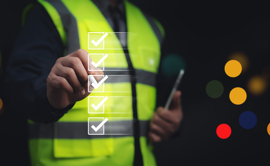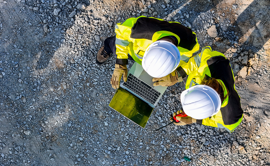The Safety of Pipelines: Keeping the country running
Published: 11 February 2020
The UK energy industry relies on unseen assets to keep it ticking over. Buried deep below ground, often carrying hazardous substances, and frequently managed by different operators, pipelines quietly provide our country’s energy needs and more. But how do we ensure that they’re safe, compliant, and conform to a standard that makes the whole thing work for the greater good?
One answer: The Pipeline Safety Regulations 1996
The Pipeline Safety Regulations, or PSR, apply to all pipelines in Great Britain and in territorial waters of the UK Continental Shelf, with a few exceptions. And while the PSR may look like a pretty hefty set of considerations on first read, when push comes to shove, the PSR is all about common sense, safety, and integrity. It’s divided into four main parts.
Part One: Introduction and Terminology
You’ll find out here whether the pipeline you manage even falls within the definition of a pipeline. A drain or sewer, for example, lies outside of the classification. Similarly, terms such as ‘dangerous fluid’, ‘operator’ and ‘major accident’ are defined, in case of any doubt. Further, this area defines where the PSR applies geographically.
Part Two: Enticingly titled ‘General’
Despite an uninspiring title, this is the real meat of the Regulations, with a detailed explanation of duties in each of the following areas:
- Design of a pipeline: ensuring that the design considers the operating regime for the pipeline, the conditions under which the fluid is to be conveyed as well as the environment to which the pipeline will be subjected.
- Safety systems: that no fluid is conveyed in a pipeline unless it has been provided with such safety systems as are necessary for securing that, so far as is reasonably practicable, persons are protected from risk to their health or safety.
- Access for examination & maintenance: that no fluid is conveyed in a pipeline unless it has been so designed that it may be examined and maintenance carried out safely.
- Materials: that no fluid is conveyed in a pipeline unless it is composed of materials which are suitable.
- Construction and installation: that no fluid is conveyed in a pipeline unless it has been so constructed and installed that it is fit for the purpose for which it has been designed.
- Work on a pipeline: that modification, maintenance or other work is carried out in such a way that its soundness and fitness for the purpose will not be prejudiced.
- Operation of a pipeline: no fluid is conveyed in a pipeline unless the safe operating limits of the pipeline have been established and the pipeline is not operated beyond these.
- Arrangements for incidents & emergencies: no fluid is conveyed in a pipeline unless adequate arrangements have been made for dealing with an accidental loss of fluid, discovery of a defect in or damage to, or other emergency.
- Maintenance: that a pipeline is maintained in an efficient state, in efficient working order and in good repair.
- Decommissioning: a pipeline which has ceased to be used for the conveyance of any fluid is left in a safe condition.
- Damage to pipeline: no person shall cause such damage to a pipeline as may give rise to a danger to persons.
- Prevention of damage to pipeline: to ensure that no damage is caused to a pipeline, the operator shall take steps to inform others of its existence and whereabouts.
- Cooperation: Where there are different operators for different parts of a pipeline, each operator shall co-operate with the other to enable compliance with these Regulations.
Part Three: Major accident hazard pipelines
This chunk deals with those pipelines that carry hazardous fluids, and are riskier. Unsurprisingly, they attract additional duties with more detailed requirements. You’ll find which notifications an operator must give before construction and use, and to whom, for example. But perhaps most importantly, here are the detailed requirements for emergency procedures, emergency plans in the case of an accident, and what should be in your ‘Major Accident Prevention Document’. In essence, part three is all about letting people know what you are up to, about emergencies, and how to plan for them.
Part four: The ‘Miscellaneous catch-all’
You’ll only need to refer to Part 4 to look for exemptions, exclusions, and what to do in defence if any of the regulations are contravened. And if you stick to the pretty realistic requirements of parts 1 to 3, you’ll probably never need it.
More from resources...
Here to achieve, validate and demonstrate compliance
Our expert consultants are available to ensure compliant and effective processes for asset design, build, maintenance, and operation.
Contact our experts





